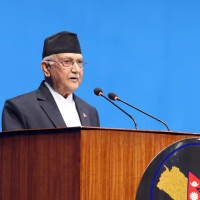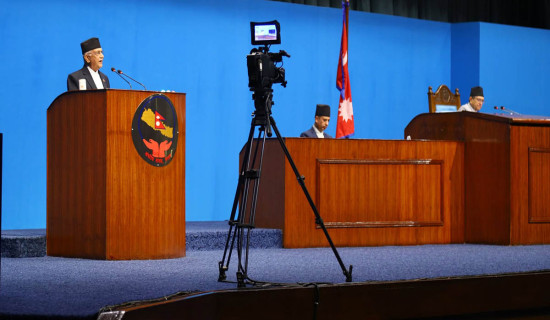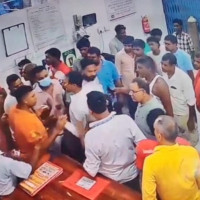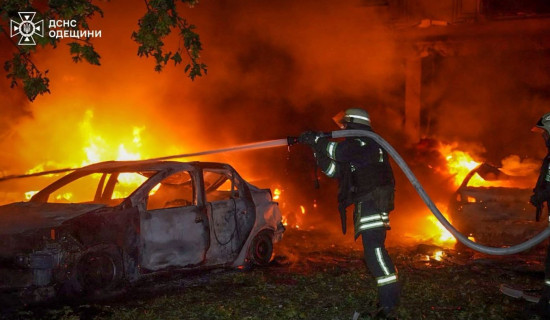- Wednesday, 23 July 2025
Save Heritage With Digital Innovation
As per the Department of Archaeology, the 2015 earthquake destroyed or affected 753 sites of heritage across the country. Nepal saw unprecedented global support, including the dispatch of foreign military teams for rescue operations and the commitment of more than $4.1 billion in reconstruction assistance.
But despite all this generosity, the exercise in reconstruction was severely hampered. While politicization and corruption are well debated, less debated but equally damaging were skill deficiencies, loss of traditional knowledge, and lack of documentation. With the elder craftsman aging and few recruits from the next generation, centuries of architectural expertise are in the process of being lost. Since the construction techniques, proportions, and rituals had been passed down orally, there was confusion and delay.
Lack of authenticity
Even when structures were reconstructed, they were not highly symbolic or authentic. At Kathmandu Durbar Square, holy rituals and earthquake-resistant wooden systems like dalin were replaced with concrete and steel. In Bhaktapur, historic activities like dachi appa brick-making and detailed temple iconography were remade poorly or not at all. In Patan, the temple's tier proportions and traditional metal alloys declined. The Bungamati Machhindranath Temple was rebuilt without artisan or community involvement and lost important symbolic features.
Dolakha's Bhimsen Temple lost its original masonry, and so did Gorkha Durbar’s sacred wood carvings and religious imagery that represented Nepal's Hindu-Buddhist synthesis. We cannot overlook how rural homes across the country were substituted by metal and concrete structures, omitting traditional insulation, seismic resilience, and sustainability features. At the heart of this loss was a lack of documentation. When older artisans passed away or were displaced, their oral traditions were lost with them. Nepal did not experience only material loss, but the interruption of its living heritage - a break in the continuity of craft, ritual, and identity.
Let’s dive into some examples adopted around the world to protect cultural heritage. In 2019, when Notre-Dame Cathedral in Paris was destroyed by fire, based on pre-fire 3D laser scans, restoration specialists constructed a "virtual twin" that helped in precise reconstruction, even restoring the cathedral's characteristic acoustics. The virtual twin is also an online museum and a scientific tool to monitor potential future damage. Similarly, Spain's Integra Smart Heritage programme uses IoT sensors to monitor environmental factors, structural safety, and tourist visits in heritage sites.
Through the creation of digital replicas in real-time, the system allows for early detection of damage and green conservation. This worldwide trend towards merging old expertise with new technology presents Nepal with a rich model for conserving its cultural heritage. Since the 2015 earthquake, a few important steps have been taken in Nepal with foreign support. The American drone company Skydio helped to preserve historic Changu Narayan Temple, one of the country's oldest UNESCO World Heritage sites. They used drones with advanced 3D scanning technology to capture the temple's full geometry, dimensions, and structural details in a non-contact manner. These scans were utilised to create accurate 3D models for documentation and rehabilitation applications.
Through partnerships with Nepali stakeholders, Skydio also instructed drone flight and data analysis to Nepali students and engineers. The resulting 3D model is part of a digital documentation of Nepal's temples that will be archived and made available for education, conservation, and research. A team at the University of North Carolina (UNC) is digitally preserving Nepal's Swayambhunath Stupa through 3D laser scanning, drone imaging, and photogrammetry. The team worked with Kathmandu Engineering College and Baakhan Nyane Waa (local preservation group) to train Nepali students in digital documentation.
They gathered high-resolution scans and thousands of images of the site, which were integrated into a digital model with cultural annotations. They also conducted interviews with monks and residents and documented them. With the aid of UNC's software lab, the team is developing virtual reality and mobile apps to implement the model for education, research, and heritage preservation.
Despite these efforts, Nepal needs to adopt digital twin technology right away to document and preserve its heritage from future calamities. By 3D modeling monuments with drone surveys, laser scanning, or photogrammetry, we can store important data on structure, material, and proportion of these monuments so that future restoration is accurate. These digital repositories will also provide a foundation for education, research, and tourism. A sensible and viable option would be to involve students in a nationwide survey and modeling exercises.
Appropriate skill
Not only would this speed up documentation, but also instill young professionals with appropriate skills and a deeper respect for traditional architecture. Key details of Nepali handicraft—wood joinery and stone carving—are also possible to introduce as practical modules into university courses. Nepal should begin transforming urban heritage zones like Kathmandu, Bhaktapur, and Patan into smart heritage cities by installing sensors to monitor vibration, humidity, and temperature. Live updates from this can prevent long-term damage and alert caretakers before it is too late.
Heritages are not just clay, wood and stone. They are like family portraits or heirlooms, carrying memory and identity across generations. Nepal has the opportunity to emerge as a global role model in cultural heritage preservation by combining its traditional knowledge with modern technology. Thus, Nepal must bridge the gap between traditional craftsmanship - the clay, and modern technology - the cloud, to effectively preserve its cultural heritage.
(Pudasaini is a civil engineer and researcher focused on smart construction and innovation.)





-square-thumb.jpg)




-original-thumb.jpg)





